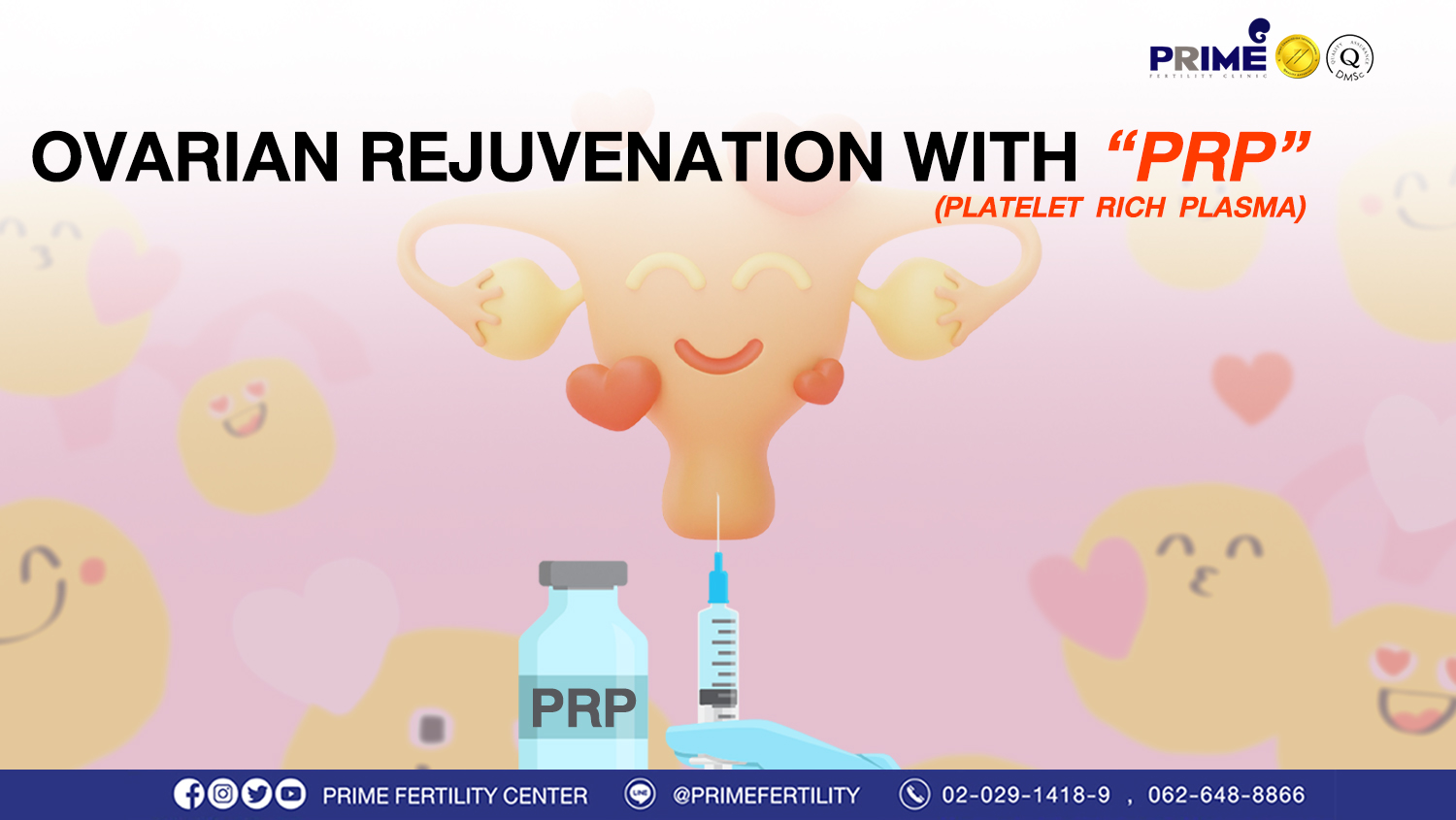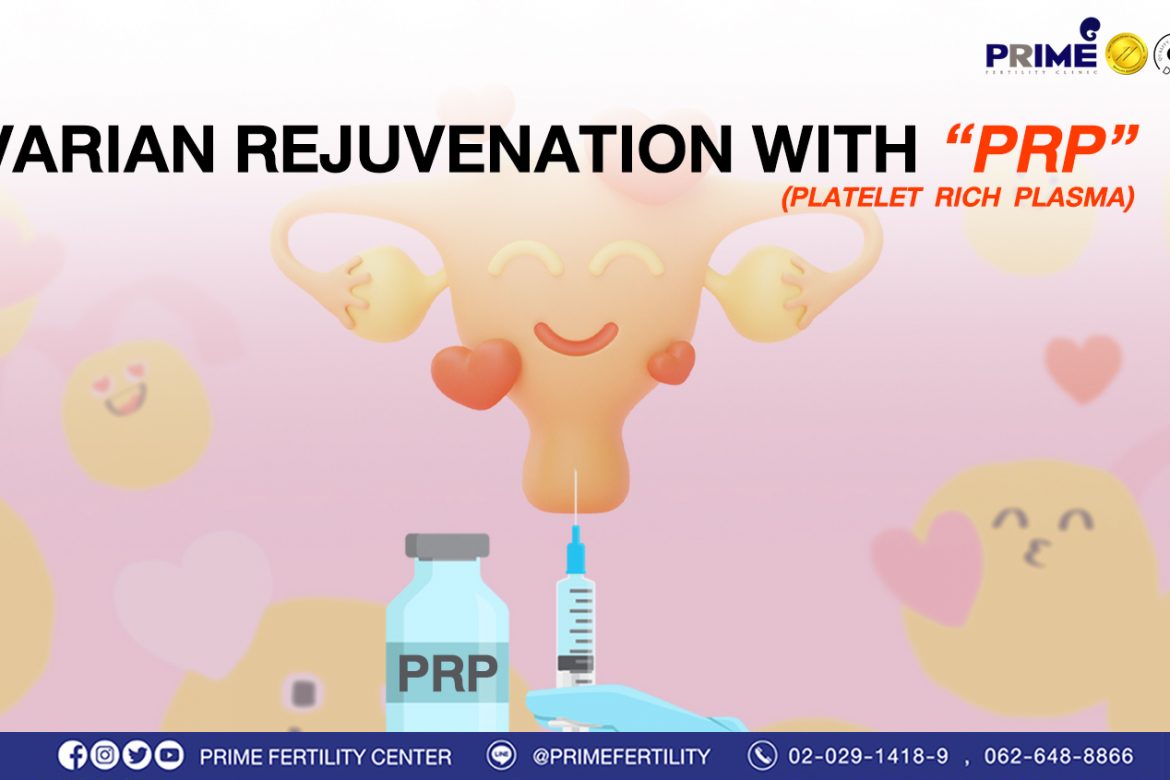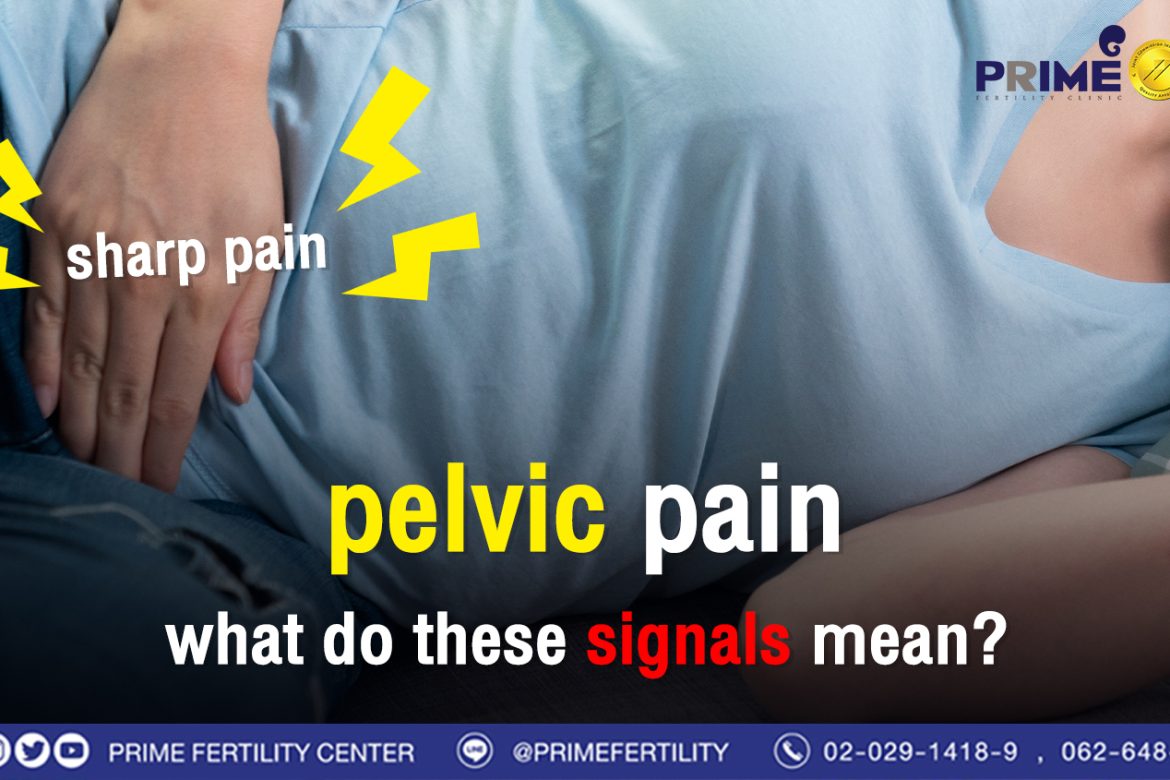PRP (Platelet Rich Plasma) Therapy is the injection of a patient’s own platelets. PRP is produced by spinning blood in a centrifuge so that it separates from plasma layers.

Plasma is a clear-yellow liquid portion of blood that contains plenty of platelets providing several growth factors and cytokines, e.g., Transforming Growth Factor (TGF), Vascular Endothelial Growth Factor (VEGF), Platelet-Derived Growth Factor (PDGF), and Epidermal Growth Factor (EGF). These substances play an important role in cell regeneration.
PRP is suitable for:
- Menopausal women whose ovaries stop functioning naturally
- Women in perimenopause
- Women with primary ovarian insufficiency or poor ovarian function
- Women who have experienced IVF and have had the substandard response to the treatment, such as low egg count (less than 3 retrieved eggs)
Procedures of Ovarian PRP
- Collect a patient’s own blood for the amount of 10-60 milliliters by blood drawing from the patient’s arm then keep in a special blood tube.
- Use a centrifuge to get some Platelet Rich Plasma (PRP) for 2-4 milliliters.
- The specialized doctor performs a transvaginal PRP infusion into the patient’s both ovaries using the special syringe. An ultrasound scan is needed to evaluate the position of ovaries (in the same way as the ovum retrieval procedure in IVF treatment).
- After the procedure, the patient should rest for about 1 hour before leaving.
Possible Risks or Complications
- Mind pain and little bleeding after the procedure. These symptoms will spontaneously fade away within 1 day.
- Abdominal bleeding as the ovaries have been pierced several times during PRP procedure.
- Ovarian infection that leads to the pus in ovary and may cause a permanent ovary loss.
- The nearby organs might be pierced, such as large vein/artery, intestine, bladder.
- To use the blood that does not belong to the patient may cause transmitted diseases, e.g., AIDS, Hepatitis B, Hepatitis C.
- Complications of anesthesia
Follow-Up Process
About 2-3 weeks after PRP procedure, the patient needs to get blood drawing for AMH (ovarian reserve testing), FSH, and Estradiol in order to evaluate the performance of ovaries. The egg count should increase after the procedure. For the next IVF cycle, the retrieved eggs should increase as well. So that the effectiveness of an ovarian PRP lasts about 2-3 months after the procedure.
However, the studies of ovarian PRP are lacking. The treatment with this procedure has not yet recognized as the international standard. And the results are unclear regarding the increase of egg count. But it is an alternative for some patients with those serious conditions.
Reference: Prime Fertility Center Co., Ltd.
If you’re interested in our ICSI program, kindly find more details as below website: https://www.primefertilitycenter.com/en/package-promotion-2/icsi-package/
—————————————————————–
ICSI (Intracytoplasmic Sperm Injection)
ICSI (Intracytoplasmic Sperm Injection) is an in vitro fertilization procedure with the laboratory technology. Both IVF and ICSI are comprising of similar procedures. But the difference is how sperm will fertilize an egg. In ICSI program, only one best sperm cell will be selected then injected directly into a fully matured egg. Patients will be prescribed some hormonal medications. Stimulating ovaries to produce several eggs. ICSI can make a pleasant fertilization rate. As well as reduces some fertilization problems or abnormalities caused from egg and sperm. For examples: multiple sperm fertilize an egg, sperm cannot penetrate the egg. The combined egg will transform to be an embryo after fertilization. Next, the embryo will be raised and will grow up among the appropriate environment inside a laboratory. Finally, the embryo will be transferred to the uterine cavity in order to implant then develop to be the fetus later on.
Couples who should receive the infertility treatment with ICSI program:
- Female’s age more than 35 years
- Stenosis for both sides of the fallopian tube
- Severe Endometriosis
- Ovarian hormone dysfunction for examples: Chronic Anovulation, PCOS (Polycystic Ovary Syndrome)
- Severe sperm abnormalities including sperm morphology, sperm count, sperm motility
- Male who is sterile or had a vasectomy but the body can still produce sperm. To extract sperm under this limitation, a surgical procedure will be performed such as PESA, TESA, TESE.
- Couples who have failed from previous IVF cycle
- Couples who prefer to screen the embryo’s genetic diseases
Frozen Embryo Transfer (FET)
Frozen Embryo Transfer (FET) is the process of embryo transplantation into the uterus after thawing frozen embryo. The patient can choose the FET date by convenient time e.g., 1-2 months after the fertilization process. The evidence supports FET in women more than 35 years of age are providing more pregnancy rates than FRESH embryo transfer.
Due to the inducing medication that the female takes to develop multiple of healthy ovum, the huge amount of hormones generated will weaken endometrium, consequently lessening the success rate of the transfer regardless of the perfect condition of embryos. Given the circumstance, the embryo transfer right away after ovum retrieval (FRESH transfer) may not be an effective protocol.
Moreover, a number of studies from various institutes found that FET offers better and higher chance of pregnancy than the FRESH transfer because endometrial tissue is in more proper state for embryos. Therefore, the doctor will consider which protocol fits best for each couple individually.



